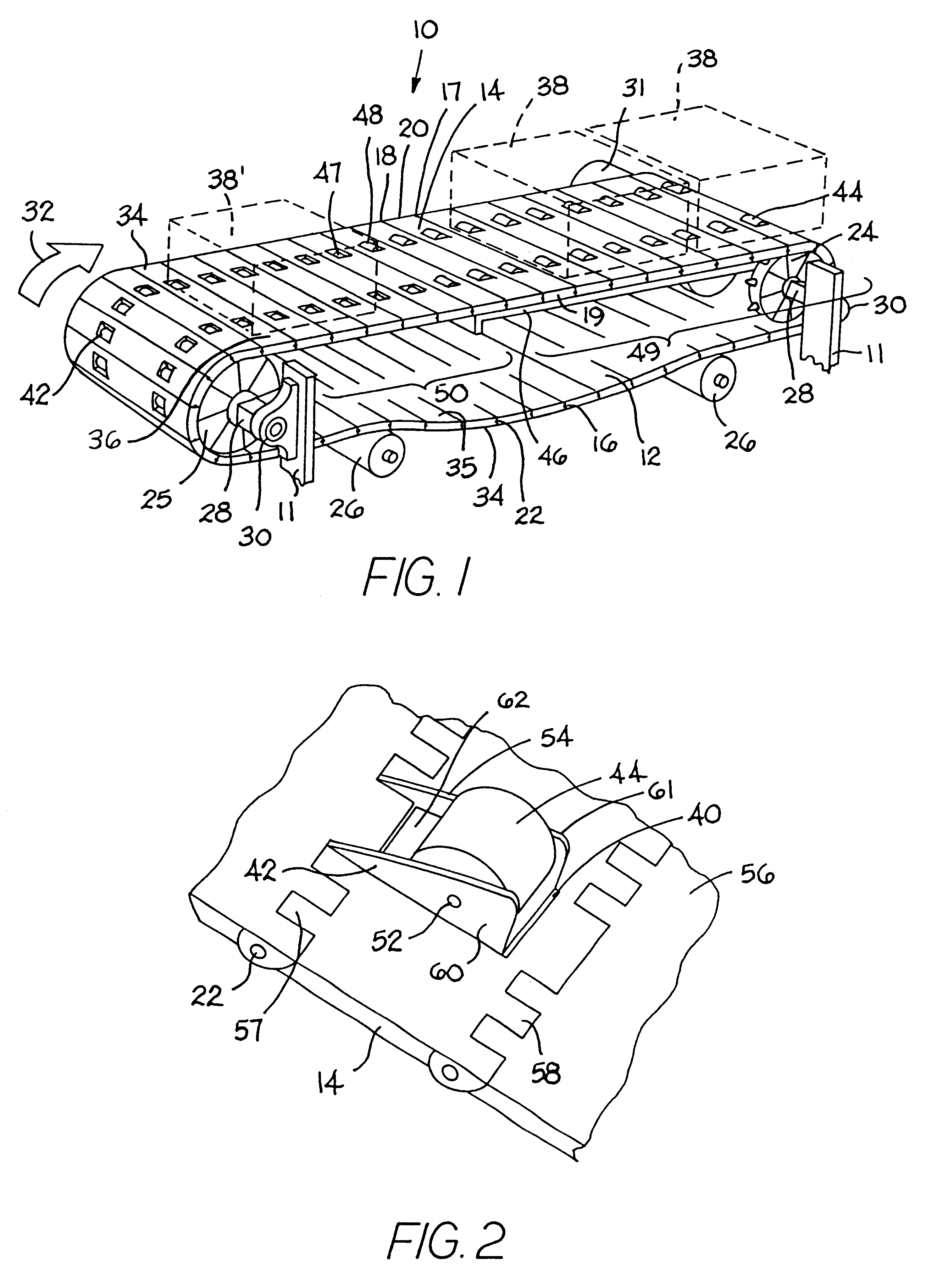Changing the characteristics of an article-conveying belt surface on a running conveyor
a technology of article conveyor and belt surface, which is applied in the direction of conveyor parts, packaging, transportation and packaging, etc., can solve the problem that the plant is often incompatible with the other challenges
- Summary
- Abstract
- Description
- Claims
- Application Information
AI Technical Summary
Benefits of technology
Problems solved by technology
Method used
Image
Examples
Embodiment Construction
An exemplary conveyor having features of the invention is shown in FIG. 1. The conveyor 10 includes a conveyor frame 11 supporting a conveyor belt 12. The belt shown is in the form of an endless conveyor belt consisting of a series of rows 14 of belt modules linked together by hinge pins 16. Each row extends along the conveying path from a first end 17 to a second end 18 and across the width of the row from a first side edge 19 to a second side edge 20. Each row may comprise one or more belt modules. Hinge elements along the first and second ends of each row include aligned apertures 22 for a hinge pin acting as a journal to allow the belt to articulate about drive sprockets 24, idler sprockets 25, and returnway support rollers or drums 26.
The sprockets 24, 25 are mounted on shafts 28 rotatably supported by bearing blocks 30 at each end. A motor 31 drives the shaft 38 of the drive sprockets 24 to move the belt in the direction of belt travel indicated by arrow 32. (The motor could a...
PUM
 Login to View More
Login to View More Abstract
Description
Claims
Application Information
 Login to View More
Login to View More - R&D
- Intellectual Property
- Life Sciences
- Materials
- Tech Scout
- Unparalleled Data Quality
- Higher Quality Content
- 60% Fewer Hallucinations
Browse by: Latest US Patents, China's latest patents, Technical Efficacy Thesaurus, Application Domain, Technology Topic, Popular Technical Reports.
© 2025 PatSnap. All rights reserved.Legal|Privacy policy|Modern Slavery Act Transparency Statement|Sitemap|About US| Contact US: help@patsnap.com



